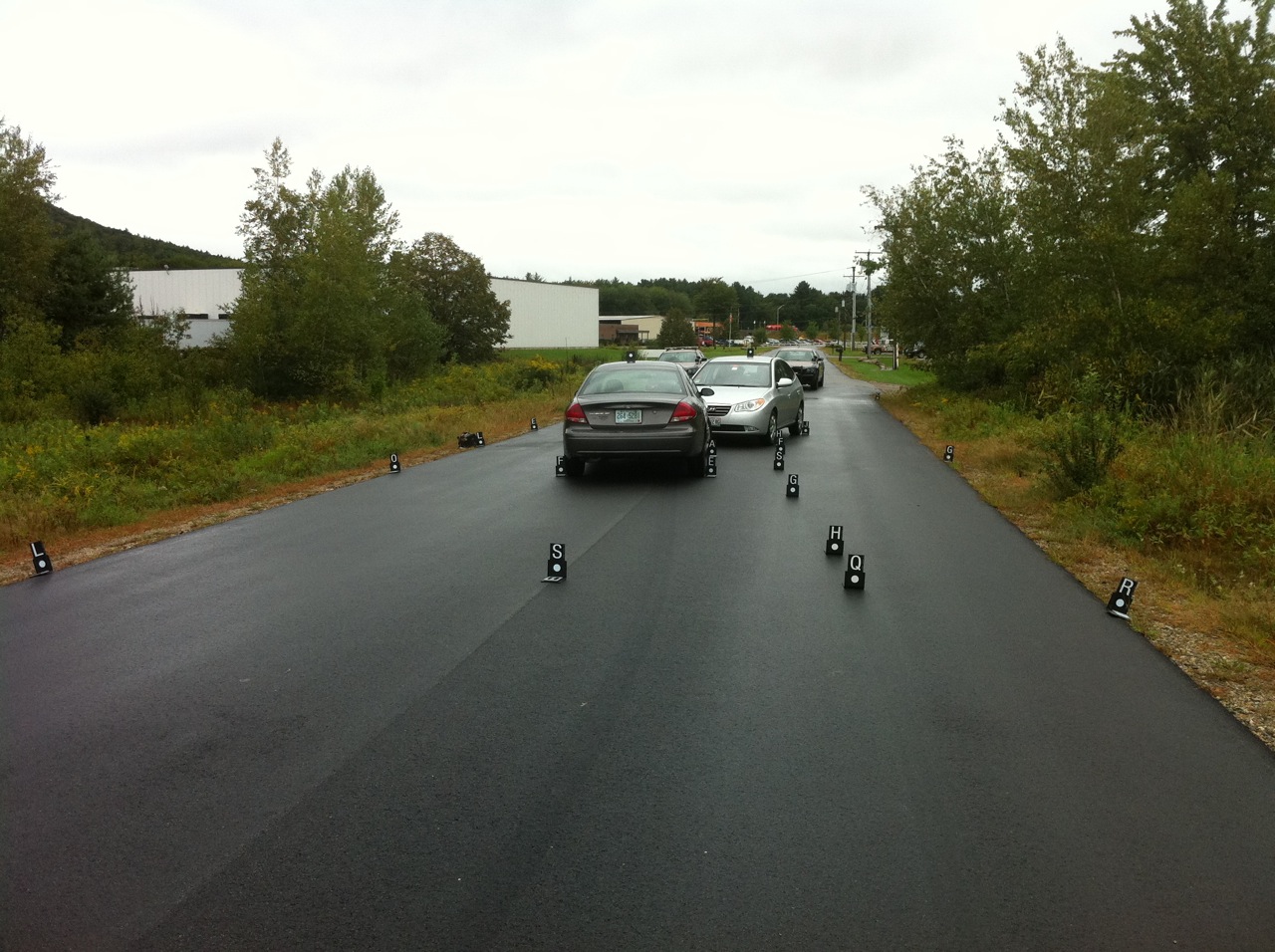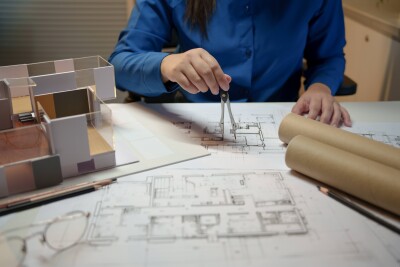New Hampshire State Police make photogrammetry standard procedure for accident scenes
KEENE, N.H. – Here in the State Police barracks, Sgt. Joseph DiRusso doesn’t mince words in extolling the virtues of photogrammetry for documenting accident scenes. For an investment by the New Hampshire State Police of about $500,000, “We can get every accident scene cleared in about one third the time it used to take us,” he said.
New Hampshire is now the first state in the United States to equip every state trooper with a high-resolution digital camera and photogrammetry targets in the trunk of every vehicle. It is now standard procedure for every accident scene to be photographed with the targets, replacing the old procedure of using a tape measure and creating a written diagram of the scene.
DiRusso is quick to note that more serious and technical crashes, where there is uncertainty about what happened or likely to be charges files, are still handed over to a Technical Accident Reconstruction unit, and they may also employ total stations or other techniques in analyzing a scene. “We’re going to use this for serious accidents where there’s no question as to what took place,” he said. “We’ll get the scene documented and open the road up as soon as possible.”
The program was begun about 18 months ago, with the application and winning of a federal grant from the National Highway Traffic Safety Administration by the N.H. Highway Safety Agency, which is part of the Governor’s office, at the request of the state police.
“It was a need that we saw in Highway Safety,” said John Clegg, field representative with the HSA. “One of the main goals was clearing the road as quickly as possible.” Not only does clearing the road more quickly save money (both police resources and general business and consumer resources), but it helps to eliminate secondary crashes that inevitably occur when there is a prolonged back-up, especially on the state’s highways, he said.
DiRusso has now processed roughly a dozen scenes himself, as his background with accident scene reconstruction training and time with the motorcycle unit led him to be trained with the Photometrix iWitness software the State Police have purchased. DiRusso imports the photos into iWitness, manually associates targets until the software begins to recognize matching targets from photo to photo, then keeps clicking the center of targets presented to him until he has a diagram of the scene.
After that, he exports a DXF file into Crash Zone, a common CAD software used by police departments and sold by The CAD Zone. There he can add in the specific car make and model, insert trees and other objects into the diagram, and put together a 2D deliverable from the 3D data set that can be used in court and other purposes. DiRusso said it’s rare that he uses the third dimension in his diagrams, though he can do 3D animations. He demonstrated something he’d put together as a proof-of-concept, showing how a bicyclist was hit by a backing-up car.
“I’d only use 3D if there was a line-of-site issue or if someone went down an embankment or something,” DiRusso said, noting he hasn’t yet done that for an actual crash site.
By March of this year, all troopers were trained with at least two days of instruction, and the program is in full operation now.
“One of the first scenes was a probationary trooper,” DiRusso recounted, “and he’d done the training, and a month later there was domestic situation, where the man fled and crashed. [The probationary trooper] was able to process the scene himself, and was contending with six-foot snow banks and he was still able to do it right.
“So that’s when I said, ‘This is going to work.’”
He noted that using the tape measure with one person is almost impossible, that it’s difficult to get good accuracy with the tape measure, especially in windy conditions, and that with the photogrammetry, it’s so easy that they now document scenes they might have otherwise not bothered with because of the time it would have kept the road closed.
“I’ve seen it happen a couple of times where a motorcycle crash looks fine,” said DiRusso, “and the guy gets up and walks around and seems okay, but later the guy goes to the hospital and dies, and all of a sudden that crash is a big deal. Now, I can just shoot it and save it. When in doubt, we’ll shoot it.”
“Doing 300-foot scenes with tape measures is a nightmare,” agreed Lt. Jerome Maslan, who spent 10 years on the TAR unit working with “flexible rulers and pens.”
Further, he believes it’s as accurate as the Total Station (iWitness says the program can get accuracy to 11 mm), and much easier to use. “Not only do you have the ease of the small camera and bag of plates,” Maslan said. “For a total station you need a tripod, you need two people, you need to operate a real surveyor’s piece of equipment, and someone running the prism at all the target points. So the ease of use here is what gives us the ability to have so many people use it. Is there an expense part, too? Absolutely. The cameras were just under $1,000. Plus, we were in a position where very few cars actually had cameras. Nothing prevents them now from using those cameras on other crime scenes. It’s a great tool.”
DiRusso said he’s already used the photogrammetry on suicide and homicide scenes, though it works much better outside than in. He’s also had no problem using photogrammetry on night-time crashes, as the flashes and tripods that allow for long exposure times make it so the camera can still capture enough information on the targets.
The program “is going to pay for itself in no time,” said Clegg, of the Highway Safety Agency. “It’s one third the amount of time.”
“And in a time when positions and local agencies are being cut, our patrol responsibilities are being increased,” Maslan agreed. “If I can get something done in a third of a time, we have a lot of savings there.”
“It’s not going to eliminate the need for the total station,” Maslan said. “It’s just the biggest bang for the buck when you’re trying to process the scene.”






